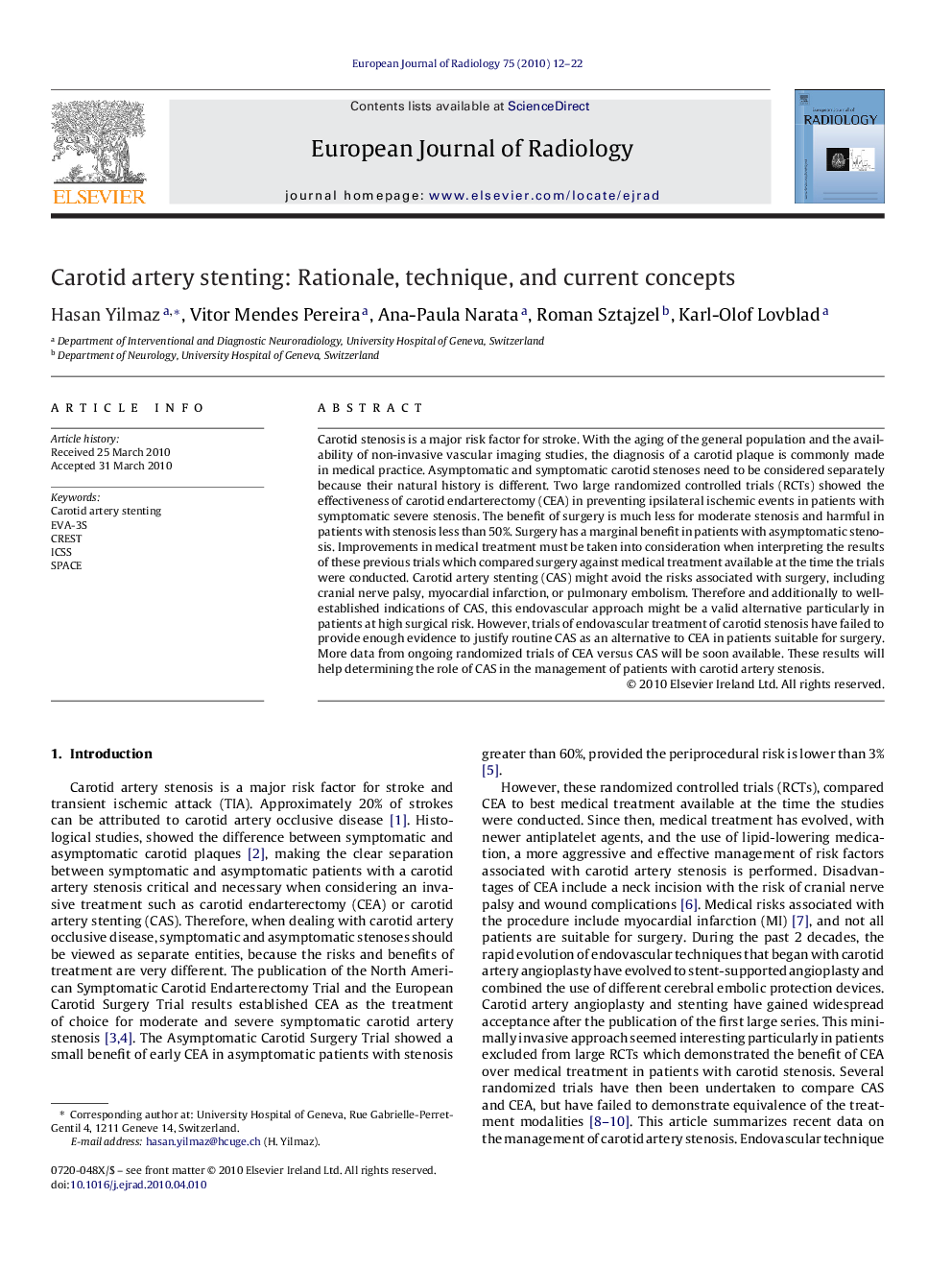| Article ID | Journal | Published Year | Pages | File Type |
|---|---|---|---|---|
| 4227134 | European Journal of Radiology | 2010 | 11 Pages |
Carotid stenosis is a major risk factor for stroke. With the aging of the general population and the availability of non-invasive vascular imaging studies, the diagnosis of a carotid plaque is commonly made in medical practice. Asymptomatic and symptomatic carotid stenoses need to be considered separately because their natural history is different. Two large randomized controlled trials (RCTs) showed the effectiveness of carotid endarterectomy (CEA) in preventing ipsilateral ischemic events in patients with symptomatic severe stenosis. The benefit of surgery is much less for moderate stenosis and harmful in patients with stenosis less than 50%. Surgery has a marginal benefit in patients with asymptomatic stenosis. Improvements in medical treatment must be taken into consideration when interpreting the results of these previous trials which compared surgery against medical treatment available at the time the trials were conducted. Carotid artery stenting (CAS) might avoid the risks associated with surgery, including cranial nerve palsy, myocardial infarction, or pulmonary embolism. Therefore and additionally to well-established indications of CAS, this endovascular approach might be a valid alternative particularly in patients at high surgical risk. However, trials of endovascular treatment of carotid stenosis have failed to provide enough evidence to justify routine CAS as an alternative to CEA in patients suitable for surgery. More data from ongoing randomized trials of CEA versus CAS will be soon available. These results will help determining the role of CAS in the management of patients with carotid artery stenosis.
